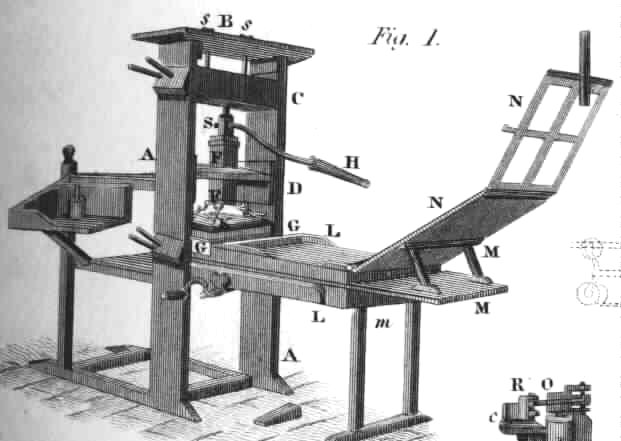Ready for an Invention
Today, Europe invents Johann Gutenberg. The University of Houston's College of Engineering presents this series about the machines that make our civilization run, and the people whose ingenuity created them.
We date book-printing with Gutenberg's Bible in 1456. One day we wrote books with pens. The next we went to the book store. And that's only a small exaggeration. By 1500 we'd printed almost 15,000,000 new books. That spelled huge change by any reckoning.
No new technology moves that fast if the world isn't primed to receive it. But the world was. Europe had cried out for movable type since the late 1100's. That was almost 300 years.
First, Benedictine and Cistercian monks took up serious book making. They set up large book-copying centers. They honed the technology of pen and ink.
Their books spawned the new Medieval universities. In Paris, academic superstars like Pierre Abélard turned learning into a spectator sport. Soon, commercial scribes were setting up shop up around the universities.
They'd copy books in pieces. One student read Chapter 3 while another studied Chapter 8. Scribes split up copying the same way. Booksellers farmed pieces out to cottage-industry copiers. A scribe copied a chapter in one house. An artist trimmed it in another. Those assembly-line networks spread the written word. They created a demand for it.
Up to now all this writing was done on sheepskin. Islamic scholars in Spain had picked up the old Chinese invention of paper in the late 12th century. But the Catholic Church scorned paper. They weren't inclined to buy into a Moslem technology.
So the demand for books rose until the cost of sheepskin became impossible. Italy finally began making paper in 1270. In the late 1300s, France and Germany took it up. By 1400, only England still held out against this cheap new writing material.
By 1400, scribes were using another Chinese technology to speed book making. It was block printing. They started using wood blocks to put pictures and illuminated letters in books.
That was the world Gutenberg entered. By the late 1430s, he was one of several trying to mechanize book making. By now, people had block-printed simple books and decks of playing cards. It's even likely that some forms of movable type had been tried before Gutenberg.
We normally have to learn to want new technologies. But now and then one fills a long-standing craving. Flight was like that. So was TV. If one person hadn't invented it, another would've.
And that's the way it was with printing. Sure, Gutenberg invented movable type. But, it's no exaggeration to say that Medieval Europe worked for 300 years to invent Gutenberg.
I'm John Lienhard, at the University of Houston, where we're interested in the way inventive minds work.
(Theme music)
Rasmussen, B.H., The Transition from Manuscript to Printed Book. London: Oxford University Press, 1962.
The Haarlem Legend of The Invention of Printing by Lourens Janszoon Coster, critically examined by van der Dr. A. van der Linde, Naarden: Anton W. van Bekhoven, 1968.
Scholderer, V., Johann Gutenberg: The Inventor of Printing. London: The Trustees of the British Museum, 1963.
Lehmann-Haupt, H., Gutenberg and the Master of the Playing Cards. New Haven: Yale University Press, 1966.
See also the Encyclopaedia Britannica article on Printing.
A great deal of specialized vocabulary surrounds all this history. The Church copying centers were called "scriptoria." Book copyists were painfully aware of the accumulation of errors that could occur when they worked from one copy to the next. They accordingly tried, always, to work from master copies that they called "exemplars." The technical name for sheepskin was "vellum" or "parchment."
The estimated 14,500,000 books printed by the year 1500 are called the "incunabula," which literally means that they come out of the cradle of book printing. They represented about 37,000 texts. Half those books were some form of religious material. Three quarters were written in Latin.
For more on Gutenberg, see Episodes 216, 628, 753, 894, and 992.

clipart